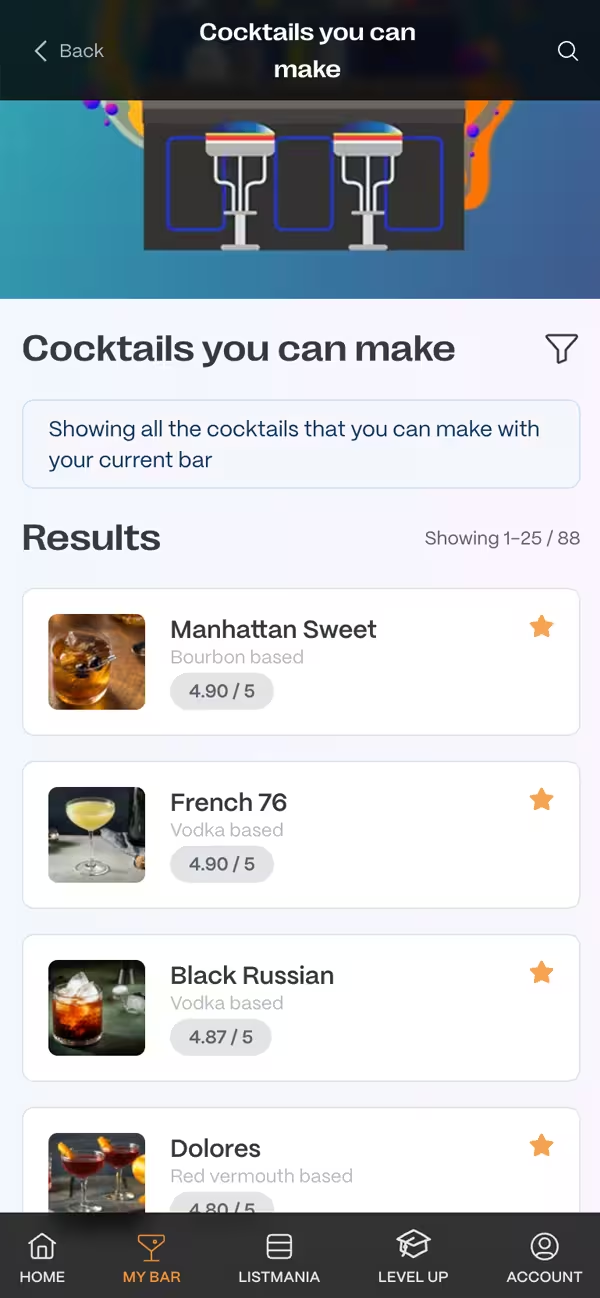Cocktails have always had a certain charm, but recently, they've taken a delightful leap back into t...
Tiki Tipples
Polynesian culture, epitomized by intricately carved wooden tiki statues, may have been around for hundreds if not thousands of years, but the tiki cocktail phenomenon originated in golden sun-drenched California during the 1930s.Donn Beach, an entrepreneur of note who changed his name to suit that of his Polynesian-themed restaurant, Don the Beachcomber, was the first to come up with the idea of making cocktails that blended exotically flavored fruit syrups, biting rums and fresh fruit juices. These divine drinks became known as Rhum Rhapsodies, the tiki cocktail craze soon caught on in a big way with the Hollywood set, and Don the Beachcomber and many other copy-cat restaurant/bars flourished for more than thirty years.
The tiki cocktail trend was by no means just a Californian concept, however, and the public's love of tiki drinks soon spread across the country and, eventually, across the world. Many new tiki cocktails were added to an ever-growing list, including the banana daiquiri, the barbacoa cocktail and the tiki bandit. Arguably the most well known of all tiki cocktails is the mai tai, which mixes lime juice with curacao and rum and which is usually presented to its purchaser garnished with fresh fruit. Its history is not without controversy, though, as a protracted disagreement raged between Donn Beach and rival tiki-creator, Victor Bergeron, as to who exactly brought the mai tai into being. Other popular mixes include concoctions with imaginative names like The Night Marcher, where the secret ingredient is Cholula Mexican hot sauce, The Wisdom of Pele, which mixes no less than four different types of rum, and, last but by no means least, the original Zombie, made famous by Donn Beach himself and comprised of, among other things, white grapefruit juice, falernum, grenadine and cinnamon syrup.
A custom that grew up alongside the public's love of tiki cocktails, was the love of tiki mugs. Originally, most, if not all, tiki cocktails were served in special glazed ceramic mugs shaped to represent the original wooden tiki statues that lingered in far-away Polynesia, and the lucky imbiber could expect to keep his mug after he had finished his drink. Tiki mugs went from being a major part of the tiki craze in the 1930s through early 1960s to languishing in relative obscurity in junk shops all over the country from the late 1960s through the 1980s to becoming highly sought after collectors' items in the 1990s. There are also many different types of collectible tiki mug, and the more colorful among them include the volcano bowl, the scorpion bowl and the head hunter mug.
During the later part of the tiki craze, cocktails were no longer confined to a strictly-Polynesian theme, and Asian-themed 'tails with their Fu Manchu tiki mugs also became popular. These days, tiki cocktails can be found on the menu of most upscale restaurants and cocktail bars as the days of decadence that characterized the mid-twentieth century seem to be returning, at least as far as exotic drinks are concerned.
Pardon the interruption
Did you know that you can become a member for free, taking your cocktail making skills up to level 11. You can save your My Bar ingredients, make tasting notes, have personalised Tried and Want to try lists and more.
Filed with tags
More to explore
Best Red, White, and Boozy Drinks When it comes to celebrations, nothing sets the mood quite like a...
Turns out, there’s a right way to stir your cocktail, and once you master it, you’ll wonder how you...
Tag cloud
Explore more with our randomised tag cloud.
-
Gin and Juice
-
Baseball
-
Bold
-
Eggnog
-
Hazelnut
-
White Russian
-
Coriander
-
Game Tactics
-
Lush
-
Old Fashioned
-
Infusion
-
Brunch
-
Memorable
-
Influential Figures
-
Chef Created
-
1800s
-
Infusions
-
Citrus Garnish
-
Warm Drinks
-
Fermentation
Bartender's top tip
Related posts
History of the Sazerac Cocktail
An intoxicating combination of absinthe, cognac, and bitters, with a teaspoon of sugar for good measure, the Sazerac is not a cocktail that should be gulped down quickly. The high alcohol content dema...
The History of the Sex on the Beach Cocktail
Ask any professional bartender for a Sex on the Beach cocktail and you will likely be met with a slightly disdainful look - it is hardly a drink for the more discerning of cocktail enthusiasts. Howeve...
Can You Find All The Cocktails In This Picture?
How well do you know your cocktails? A little? A lot? Are you a bartender who has an encyclopaedic knowledge of all the classic and new age wonders? Well it's time to put that knowledge to the test no...
Subscribe to our Newsletter
Get tips straight into your inbox.
Upgrade your mixology
Become a member for free taking your cocktail making skills up to level 11. Or become a premium member to rise to cocktail greatness.
- Save your bar forever
- Access to our Cocktail Creator, allowing you to create your own wonderful concoctions.
- Access to Cocktail Colin; ask Cocktail Colin anything on an individual cocktail and he'll give you the answers you need.
- Create personalised cocktail menus for all your events, bars or parties
- Save cocktails to personalised 'Tried' and 'Want to try' lists
- Create and record tasting notes on cocktails
- Create lists of cocktails to share with friends and family
- A personalised MyBar URL, allowing you to share everything you can make with friends
- And much more ... (what to buy next, measurement choices, search personalisation...)
Have you tried our Wordpress Plugin?
Download our plugin and embed cocktail recipes directly onto your own site or blog.
Choose from our whole recipe database, or choose a specific cocktail made with a certain ingredient, and let us place a beautiful recipe on your own site.
Find out more



